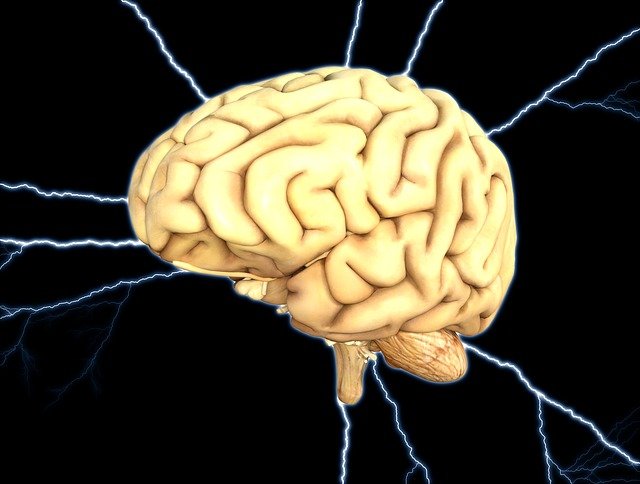It is always easier to succumb to temptation than to gather willpower into a fist and give up what beckons you so much. Unfortunately, this rule also works when it comes to the transition to proper nutrition. However, you should keep going even if you can’t always choose healthy food. Changing habits is not just a process based on strength of mind and longing; it is largely influenced by how our brain works. There are several ways to train this organ to want healthy, not unhealthy, food.
6 ways to train the brain to want healthy, not junk food
1. Constantly learn new things about proper nutrition
To reconfigure the brain to the need for healthy food, you must convince it that it is necessary. By constantly learning new things about the principles of proper nutrition, foods rich in vitamins and minerals, and the benefits of a new diet for health, you set yourself up to make informed and correct choices more often. The brain gradually gets used to healthy food, which is a great solution so that you will think about unhealthy food less often.
2. Identify your triggers
As a rule, our brain tries to follow the path of least resistance, choosing what it already knows. If earlier your diet consisted mainly of pizza and other fast food, and you also considered this food the best, it may be challenging to cope with the need. But still, you can change your approach to nutrition by understanding the triggers that make you reach for unhealthy food over and over again. For example, you can use it as a reward for hard work or in moments of significant stress.
It is important to realize that when you break down and prefer something harmful but pleasant, you should tell yourself to “stop” in time and change your eating habits. At first, it can be challenging to stop and resist the urge to do what you’ve always done. Visit. A F R I N I K . C O M . For the full article .But the secret to reconfiguring the brain is to stop in time, recognize the next trigger, and replace the usual actions with new, more useful ones. For example, if you are used to eating chips when you are bored, you need to replace them with fruits, nuts, and yogurts.
At first, this will be associated with significant discomfort, but over time, the brain will get used to the changes, and you will want fewer and fewer chips. It is also worth doing with the food you eat your stress, and it is better to understand the causes of your emotional stress and learn how to recover from shocks healthily.
3. Keep the balance
A sharp rejection of the usual acts as a severe stress on the brain. Therefore, it may be difficult for you to start following a proper diet and eliminate fast food and other harmful foods from your diet. The fact is that depriving oneself of something pleasant causes the brain to associate healthy eating with negative experiences. As a result, it will try to avoid it in all possible ways.
Try to stick to a balanced eating plan that you can maintain in the long run by about eighty percent. Save twenty for momentary pleasures like candy or a hamburger during gatherings with friends. Give yourself time to achieve this balance. Do not rush yourself and your brain so that a healthy lifestyle does not become continuous stress and negativity. Gradually getting used to the changes, you can continue your path to proper nutrition and eliminate all harmful foods from your diet.
4. Have more rest
We often resort to junk food when we feel tired. The lack of rest and strength always makes us reach for high-calorie and sugar-rich food because it helps to get a quick surge of glucose in the blood and, as a result, feel a surge of cheerfulness and elation. The only problem is that they do not last long, and the damage to the body is enormous. To train the brain to want healthy food, it is important to devote sufficient time to rest. Set up a sleep regime, do not give up breaks at work — do everything to feel cheerful and energetic without junk food.
5. Take pictures of your food
If you want to start developing a new, helpful habit, you need to strengthen your motivation and not give up. To train your brain to eat healthy, take pictures of the dishes you eat every day, and then put the pictures in a separate folder. Such a food diary will help you compare your meals, stick to your goals, and track whether you can reduce the amount of junk food in your diet. In addition, the visual food diary is a subconscious reminder to make healthier choices during the next meal and reinforces the feeling that you are on the right track.
6. Strain your muscles to fight cravings for unhealthy food
No, we are not talking about physical exercises, the benefits of which are known to everyone. There is one simple but working way to deal with cravings for unhealthy food, for example, at a time when you need to make difficult choices in the store. When you find yourself at a crossroads and wondering which is better to buy chips or apples- strongly strain your calves, arms, or other muscles and stay in this position for five or more seconds.
What for? Muscle tension sends signals to the brain, forcing it to connect willpower and endurance to actions. By mobilizing these inner feelings, you can say no to junk food and make the right choice. Over time, such “training” will accustom the brain to the fact that between harmful and helpful, it will begin to give preference to the second, and the need for muscle tension will disappear.
